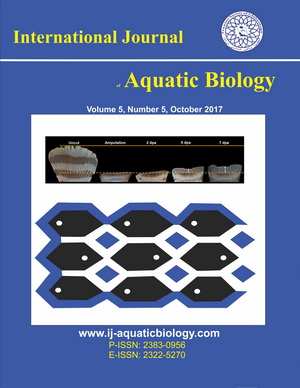Aquatic Biology Q4
 Unclaimed
Unclaimed
Aquatic Biology is a journal indexed in SJR in Ecology and Ecology, Evolution, Behavior and Systematics with an H index of 57. It is an CC BY Journal with a Single blind Peer Review review system, and It has a price of 1550 €. The scope of the journal is focused on Physiology, Biochemistry, Molecular, Behaviour, Marine, Freshwater. It has an SJR impact factor of 0,215 and it has a best quartile of Q4. It is published in English. It has an SJR impact factor of 0,215.
Type: Journal
Type of Copyright: CC BY
Languages: English
Open Access Policy: Open Access
Type of publications:
Publication frecuency: -



1550 €
Inmediate OANPD
Embargoed OA- €
Non OAMetrics
0,215
SJR Impact factor57
H Index9
Total Docs (Last Year)35
Total Docs (3 years)541
Total Refs29
Total Cites (3 years)33
Citable Docs (3 years)0.56
Cites/Doc (2 years)60.11
Ref/DocOther journals with similar parameters
Southeastern Naturalist Q4
Russian Journal of Biological Invasions Q4
AACL Bioflux Q4
Journal of the Entomological Research Society Q4
Journal of Northwest Atlantic Fishery Science Q4
Compare this journals
Aims and Scope
Best articles by citations
Effects of hydrogen sulfide on the feeding activity of Manila clam Ruditapes philippinarum
View moreSpatial variation in demography of an estuarine teleost: implications for population and fishery assessments
View moreField assessment of condition indices (nucleic acid and protein) in Mysis diluviana
View moreWest Florida Shelf pipeline serves as sea turtle benthic habitat based on in situ towed camera observations
View moreSeasonal and size-related differences in diet of the Atlantic angel shark Squatina dumeril in the northeastern Gulf of Mexico
View moreEffects of ocean acidification on growth, organic tissue and protein profile of the Mediterranean ¬?bryo¬?zoan Myriapora truncata
View moreSeasonal and spatial variations in prey utilization and condition of a piscivorous flatfish Paralichthys olivaceus
View moreLife history variation along a salinity gradient in coastal marshes
View moreOverlap in the distributions between indigenous and non-indigenous decapods in a brackish micro-tidal system
View moreMycorrhizal association with native and invasive cordgrass Spartina spp. in San Francisco Bay, ¬?California
View moreEffects of haul duration on the physical condition of sprat larvae
View morePopulation dynamics of a nonindigenous epiphytic bryozoan Membranipora membranacea in the western North Atlantic: effects of kelp substrate
View moreIron availability regulates growth, photosynthesis, and production of ferredoxin and flavodoxin in Antarctic sea ice diatoms
View moreMaternal identification of hybrid eggs in Hexagrammos spp. by means of multiplex amplified product length polymorphism of mitochondrial DNA
View moreHistochemistry on vibratome sections of fish tissue: a comparison of fixation and embedding methods
View morePopulation structure and breeding pattern of the mangrove horseshoe crab Carcinoscorpius rotundicauda in Singapore
View moreCaprella mutica in the Southern Hemisphere: Atlantic origins distribution, and reproduction of an alien marine amphipod in New Zealand
View moreAge determination and growth rate of a Callista chione population from the southwestern coast of Portugal
View moreIntroduction
View moreMultiplex assay to identify eggs of three fish species from the northern Gulf of Mexico, using locked nucleic acid Taqman real-time PCR probes
View moreActive accumulation of internal DIC pools reduces transport limitation in large colonies of Nostoc pruniforme
View morePhysiological aging in the Icelandic population of the ocean quahog Arctica islandica
View moreNumber of muscle fibres in adult Atlantic cod varies with temperature during embryonic development and pantophysin (PanI) genotype
View moreMorphological and reproductive differences among three charophyte species in response to variation in water depth
View more
Comments